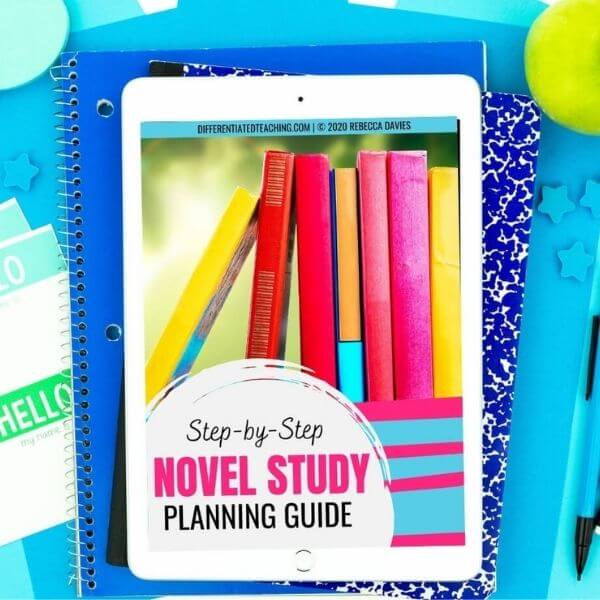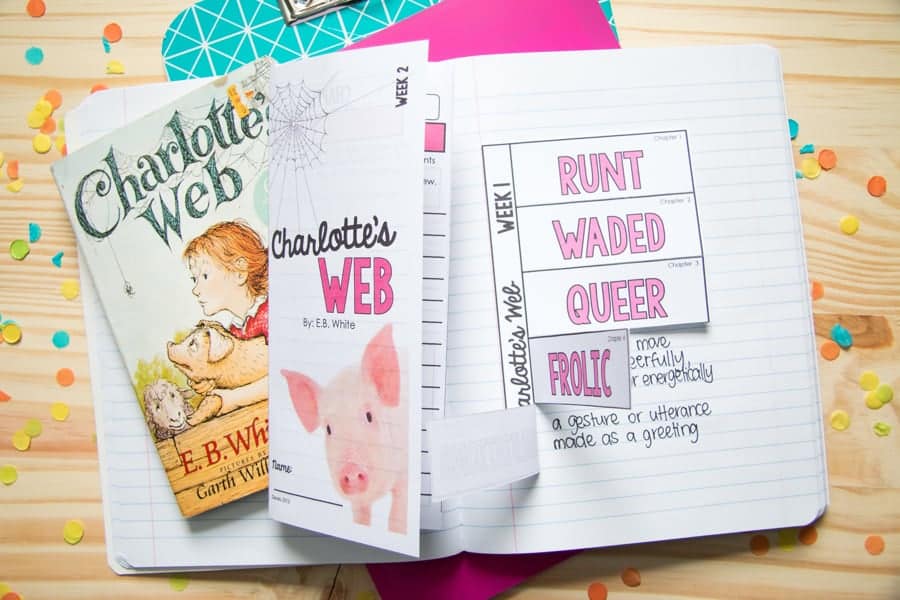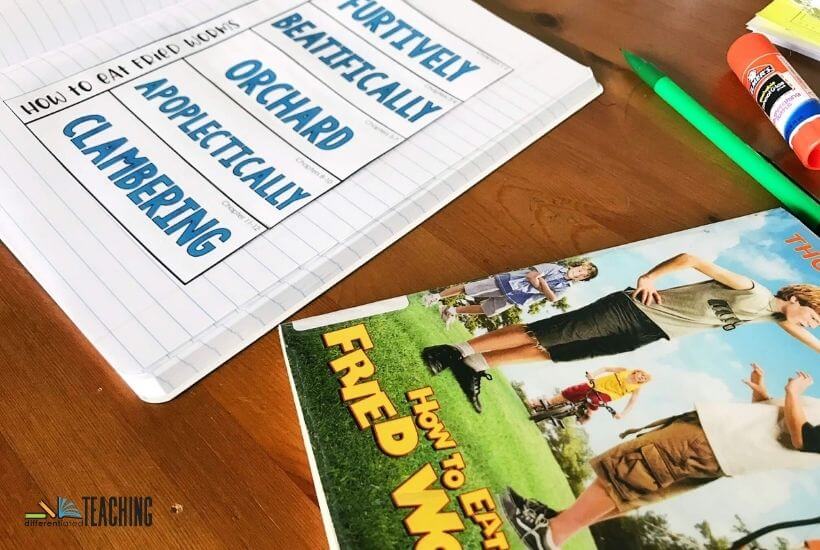The Miraculous Journey of Edward Tulane Novel Study
The Miraculous Journey of Edward Tulane is such a great book for teaching so many different skills, and if you’re a stranger to Kate DiCamillo, this is a great introduction to her highly engaging storytelling style. Whether you’re planning book clubs or looking for added accountability during independent reading. This no-prep The Miraculous Journey of Edward Tulane Novel Study is a great way to build important reading comprehension skills and vocabulary with this fabulous story.
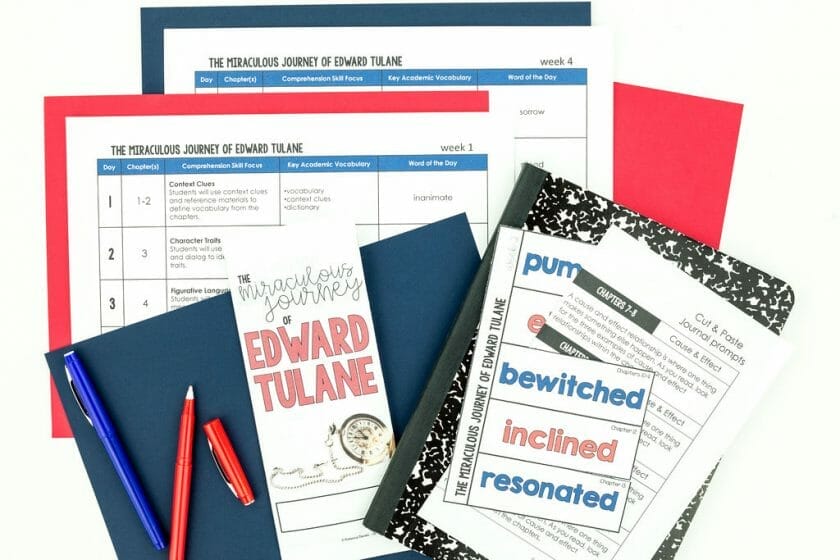
The Miraculous Journey of Edward Tulane Summary
This story tells the tale of a small china rabbit made as a toy for a child in a wealthy family. While he may appear like any other toy on the outside, it is clear from the beginning that Edward Tulane is far from your average plaything.
Through his interactions with his first owner, Abilene, the reader sees how selfish and unloving he is. It isn’t long before he’s separated from her, and throughout the remainder of the story, he’s bounced around between the various people who save him.
Through these journeys, Edward learns what love and loss truly are. Edward begins to understand the complex relationship between love and loss as he learns the story of each person who saves him.
Edward’s transformation creates a desire to love, and by the end of the story, he finds himself reunited with Abilene, now grown with her own daughter.
What reading level is this book?
The Miraculous Journey of Edward Tulane is Guided Reading Level U and is appropriate for 3-5th grade readers.
The DRA level for this book is 50, equivalent to 5th grade independent reading, so it should only be considered an independent book study for highly advanced 3rd-4th grade readers.
What’s included in The Miraculous Journey of Edward Tulane novel study unit?
This month-long novel unit breaks the book into 20 sections. Each day’s work includes both comprehension activities and vocabulary. There are four-weeks worth of daily lesson objectives and paper-saving printables included in this resource.
Here’s more about what you’ll find inside:
- Instructional guide with daily comprehension skill, objective, and key Tier 2 & text-based vocabulary
- Comprehension trifolds (provided in color and black & white)
- Reader’s notebook comprehension prompts (matching trifolds)
- Word of the Day text-based vocabulary flipbooks
- Vocabulary word wall cards
- Trifold answer keys for easy grading
- Enrichment Mini-Book with engaging projects & activities related to the text

Reading comprehension skills targeted
These novel study
Some of the comprehension skills addressed in this novel study include:
- Making inferences
- Symbolism
- Describing character change
- Analyzing characters relationships
- Point of view
- Cause & effect
- Using descriptive language
- Summarizing
- Analyzing text quotes
The daily lessons target one comprehension skill. This lets students focus on quality rather than quantity when responding to literature. Unlike many novel studies with lists of questions that require students to regurgitate the text, this format makes sure your students understand and can apply their knowledge to Wonder and other texts they read.
The novel study format
Comprehension prompts are provided in two formats, selected to reduce copies while still offering materials for student use.
Here’s an overview of each of the comprehension response formats:
Each trifold covers a week’s worth of comprehension. The advantage of this format is that it only requires one piece of paper.
Each day includes a targeted question that students respond to. This question focuses on the day’s comprehension skill.

From the student perspective, the benefit of the trifold is that it is extremely approachable. Each day’s work only takes up a third of the page, preventing reluctant writers from shutting down.
From the teacher’s perspective, it is easy to collect and grade. Many students use the trifold as a bookmark, helping prevent missing papers.
Learn more about the benefits of the trifold format.
The Reader’s Notebook prompts are perfect for advanced students who provide more in-depth analysis and struggling writers who may need more space to write their responses.
The notebook prompts are great for students with dyslexia, dysgraphia, and fine motor issues because they can be glued onto specialized paper or within a notebook to give students with large handwriting more room to respond.
For advanced readers, the notebook prompts can generate a longer, more detailed response to the daily prompt. This pushes the students to analyze and defend their answers.

Regardless of the format selected, the prompt is the same, so some students can easily work on the trifolds while others use the notebook prompts.
What academic vocabulary is included in this novel study?
Over 50 academic vocabulary words are included in this novel’s instructional guide. These include general academic vocabulary and skill-specific vocabulary.
It is crucial to teach academic vocabulary explicitly and within context. Struggling learners often lack the vocabulary essential to perform well in school and on standardized assessments, so this is an easy way to incorporate this into your regular instructional practices.
Here is a small sample of the academic vocabulary you’ll find included in this novel study:
General vocabulary:
- comparison
- evidence
- generate
- examine
- analyze
Skill-Focused vocabulary:
- point of view
- simile
- perspective
- theme
- summarize
Text-based vocabulary
In addition to the Tier 2 vocabulary, each day’s lesson includes a text-based vocabulary word that can be found within the day’s reading. Some of the vocabulary words included in this literature guide are:
- anguish
- obliged
- resonated
- inclined
- wept
- awash
These words can be taught using the included flipbook format. Designed with conserving copies in mind, the flipbooks require only a half-piece of paper per week.
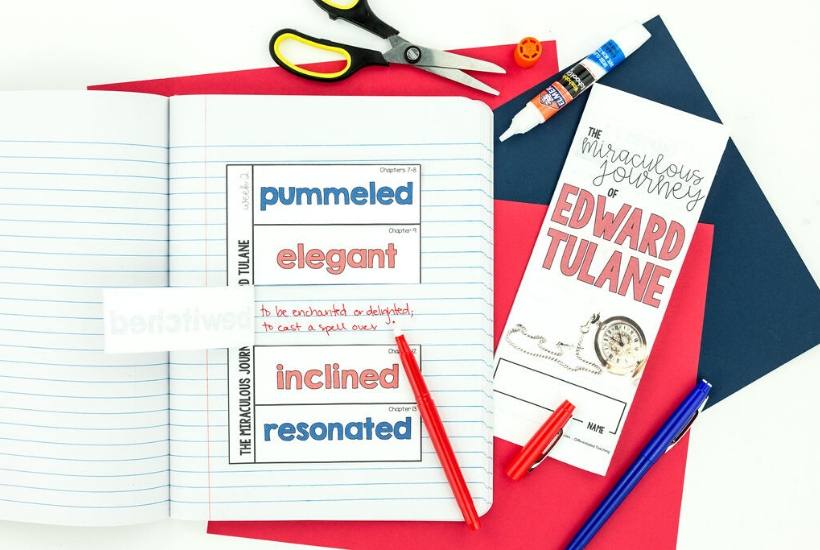
The Word of the Day Flip Book is perfect for interactive reading journals.
To use the flipbooks, cut around the outer edge, cut the tabs, and glue them into their notebook. Have students leave the flaps unglued so they can be lifted. This allows students to write under them.
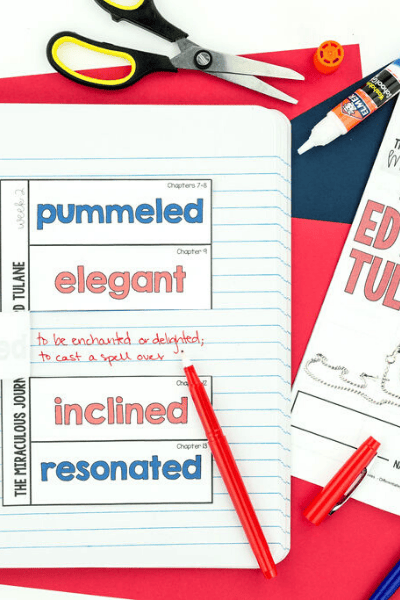
Depending on your students, you can have them define the day’s word or generate a list of synonyms and antonyms. You can even have students draw a picture of the meaning.
How to purchase this novel study
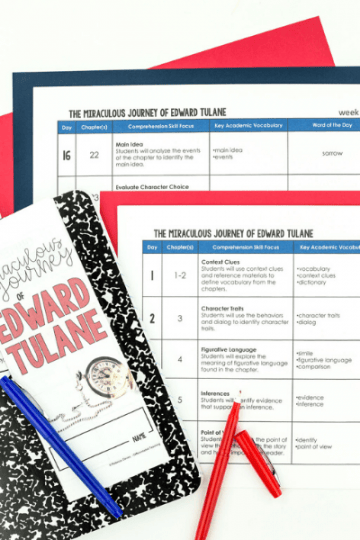
Purchase this novel unit from the link below:




